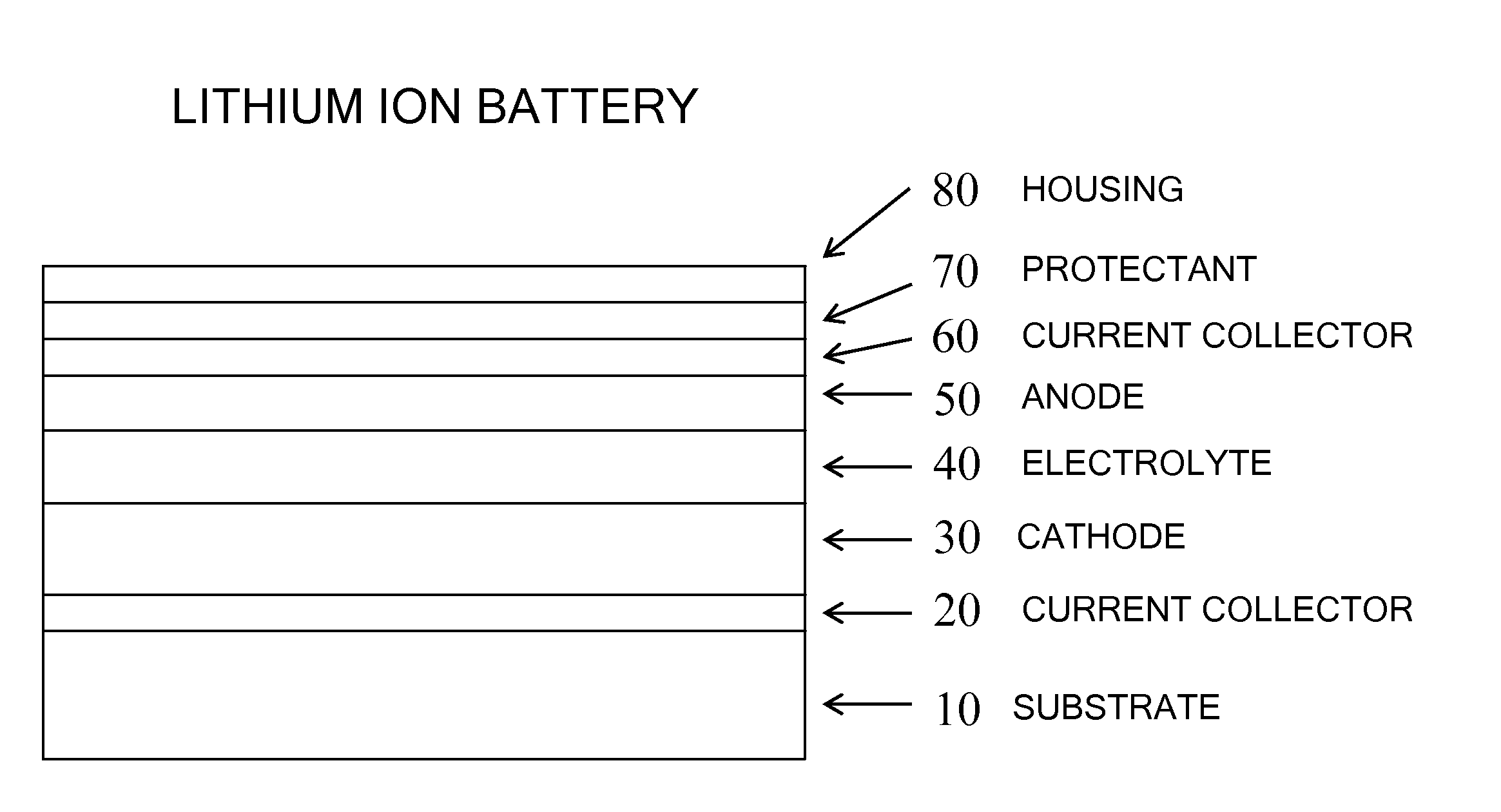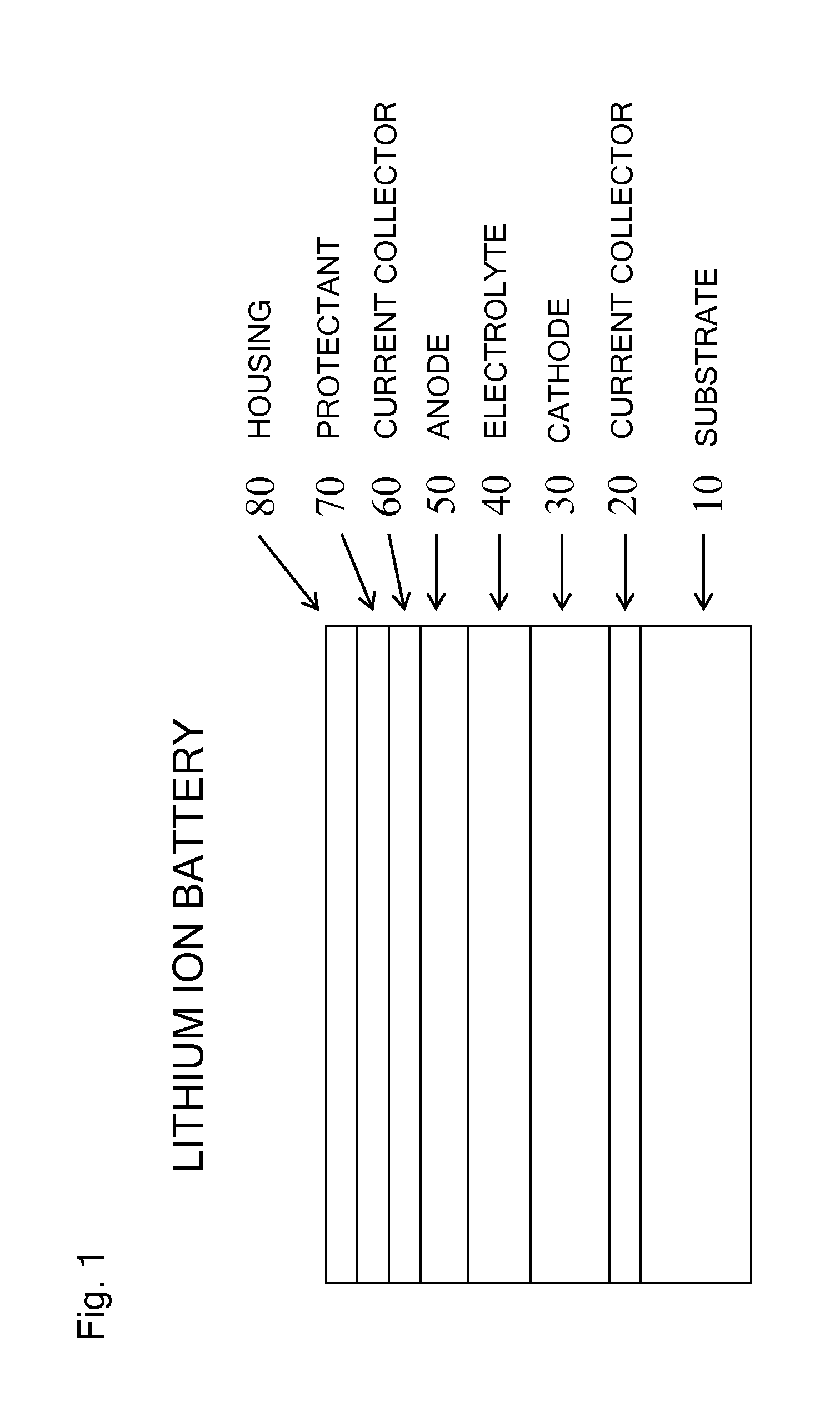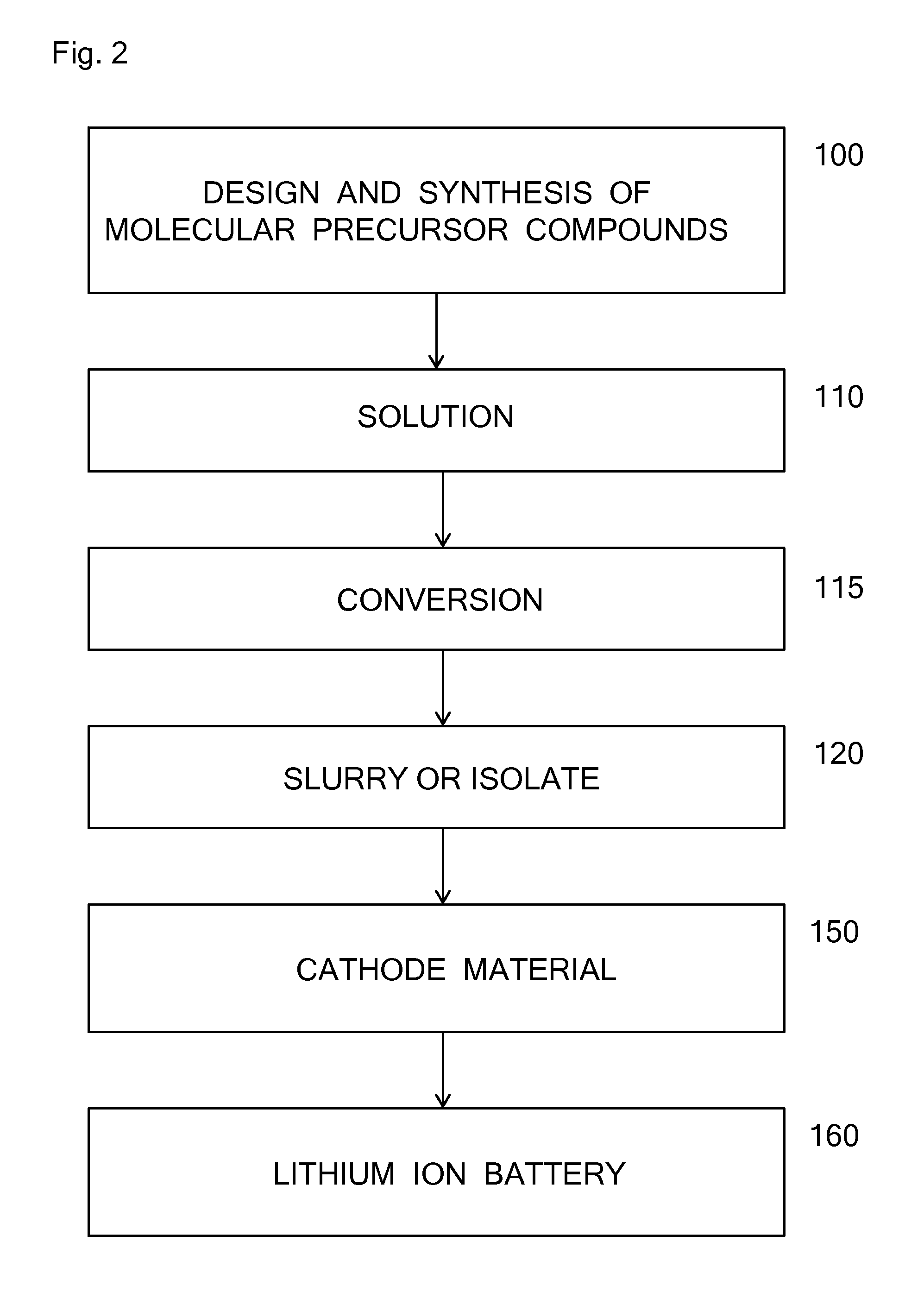Molecular precursors for lithium-iron-containing cathode materials
a cathode material and lithium iron technology, applied in the direction of silicates, silicon compounds, cell components, etc., can solve the problems of limiting the choice of cathode materials that can be synthesized, limiting the stability of cathode materials, and limiting the choice of cathode materials to be synthesized
- Summary
- Abstract
- Description
- Claims
- Application Information
AI Technical Summary
Benefits of technology
Problems solved by technology
Method used
Image
Examples
example 1
Cathode Molecular Precursor Compound LiFe(OsBu)3
[0424]A cathode molecular precursor compound represented by the formula LiFe(OsBu)3 was synthesized using the following procedure.
[0425]To an orange solution of LiN(SiMe3)2 (0.20 g, 1.2 mmol) and Fe[N(SiMe3)2]2.THF (0.55 g, 1.2 mmol) in 30 mL THF was added sBuOH (0.40 mL, 4.4 mmol) using a syringe under inert atmosphere (Schlenk line). The reaction mixture rapidly changed to a green color and was allowed to stir at 25° C. for 12 h, followed by filtration and removal of the volatile species (solvent and HN(SiMe3)2) under dynamic vacuum. 0.22 g of product (66%) was recovered as a pale green solid.
[0426]Elemental analysis by ICP: Li to Fe ratio, 1.10:1.00.
example 2
Cathode Molecular Precursor Compound LiFe(OsBu)4
[0427]A cathode molecular precursor compound represented by the formula LiFe(OsBu)4 was synthesized using the following procedure.
[0428]To a red / brown solution of LiN(SiMe3)2 (0.14 g, 0.8 mmol) and Fe[N(SiMe3)2]3 (0.44 g, 0.8 mmol) in 40 mL THF was added sBuOH (0.32 mL, 3.5 mmol) using a syringe under inert atmosphere (Schlenk line). The reaction mixture rapidly changed to a green / brown color and was stirred at 25° C. for 12 h, followed by filtration and removal of volatile species (solvent and HN(SiMe3)2) under dynamic vacuum. 0.17 g of product (48%) was recovered as a green / brown solid.
[0429]Elemental analysis by ICP: Li to Fe ratio, 0.91:1.00.
example 3
Cathode Molecular Precursor Compound LiFe[OP(O)(OtBu)2]3
[0430]A cathode molecular precursor compound represented by the formula LiFe[OP(O)(OtBu)2]3 was synthesized using the following procedure.
[0431]To an orange solution of LiN(SiMe3)2 (0.07 g, 0.4 mmol) and Fe[N(SiMe3)2]2.THF (0.19 g, 0.4 mmol) in 30 mL THF was added (tBuO)2P(O)OH (0.26 g, 1.2 mmol) at −35° C. under inert atmosphere in a glovebox. The reaction mixture rapidly changed color to brown and was allowed to stir at 25° C. for 12 h, followed by filtration and removal of the volatile species (solvent and HN(SiMe3)2) under dynamic vacuum. 0.11 g of product (40%) was recovered as a brown solid.
[0432]Elemental analysis by ICP: Li to Fe to P ratio, 1.04:1.00:3.19.
PUM
| Property | Measurement | Unit |
|---|---|---|
| temperature | aaaaa | aaaaa |
| temperature | aaaaa | aaaaa |
| temperatures | aaaaa | aaaaa |
Abstract
Description
Claims
Application Information
 Login to View More
Login to View More - R&D
- Intellectual Property
- Life Sciences
- Materials
- Tech Scout
- Unparalleled Data Quality
- Higher Quality Content
- 60% Fewer Hallucinations
Browse by: Latest US Patents, China's latest patents, Technical Efficacy Thesaurus, Application Domain, Technology Topic, Popular Technical Reports.
© 2025 PatSnap. All rights reserved.Legal|Privacy policy|Modern Slavery Act Transparency Statement|Sitemap|About US| Contact US: help@patsnap.com



